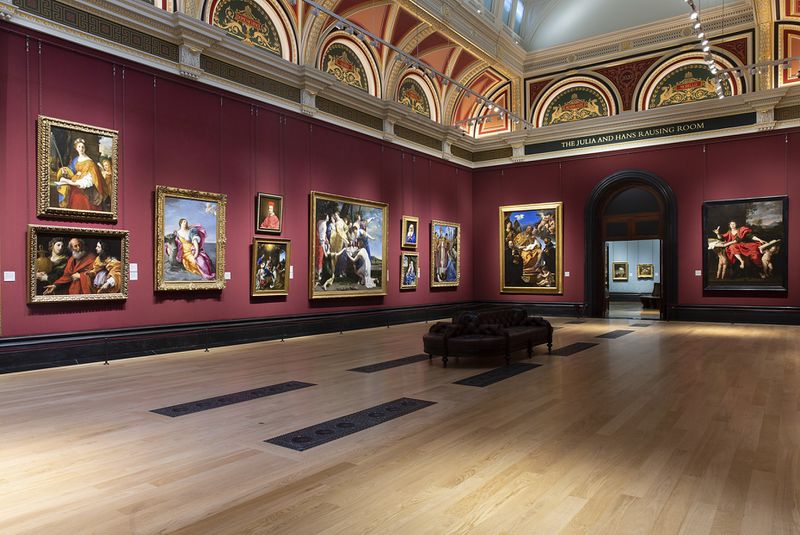The Collection
This section describes the colour category system. This followed by description of each category including equipment associated with it and how to use it. Then complicated/bespoke examples (NG6337 etc) and finally how to prepare the collection for loan. This will include all the casing stuff plus a description of the relationship with KSL.
Introduction

The National Gallery’s collection of art consists mainly of western European paintings from the 13th century to the beginning of the 20th century. The collection does include some sculptural objects, but the painting collection is its primary focus. Within this area of paintings are a wide variety of works with differing physical characteristics. These vary from early renaissance frescoes and panels (on a range of wooden supports) to many works on canvas and works on paper.
These works vary enormously in terms of mass and durability. For example, the collection includes very large and complex altarpieces, constructed from large wooden sections that can weigh up to 500kgs, to works on paper such as the Leonardo cartoon which are extremely ephemeral and require specific handling and display solutions. Paradoxically, large works of significant mass are themselves extremely vulnerable to movement by virtue of their structure working against the material they are made of when they are manipulated.
The role of the art handling department is to create safe systems of operations that we can use when moving the collection for any purpose. Any system that we develop needs to be understood by the art handling team as well as being reliable and repeatable. It also needs to follow the best conservation practice as described to us by our conservation team at the gallery.
The need for repeatable systems is due to the volume of moves that are undertaken each year with the collection. On average, around 15,000 moves of art works occur within the site of The National Gallery each year, all undertaken by the art handling team. This covers all aspects of our work, including basic moves throughout the gallery site, thousands of separate installations and preparation of works from the collection when loaned to other museums throughout the world.
Our aim is to create working systems that can safely cope with this volume of work whilst also being measurable. This is very important for the standard of our work as though we do create individual solutions to specific problems, we also need to know that our team is operating within a well understood framework from which we can confidently make decisions about the work in our care.
To facilitate our approach to the collection, we have developed a technical classification system that describes the art handling requirements for each individual object within the collection. This system breaks the collection down into three categories and names each category after a colour, either yellow, blue or silver.
Each of the categories assumes some simple characteristics for each object. Essentially weight and size are the main determining factors, the record of which category a work is placed in can be found on the individual record for each artwork held in the main collection database (TMS) under the art handling section. Within this record further, more detailed information can be included (please refer to the database description for further information).
The use of a largely generic classification system then allows us to design specific handling solutions to each category. In turn, the problems of handling and installing a specific object can be seen within this framework. The nature of the collection at the gallery has meant that such an approach is possible since the movement of large numbers of works that have similar physical characteristics is essentially the same. It also means that specific, individual solutions can be found to unique problems that can be seen within the context of the main framework.
A crucial element to the system is to develop the correct equipment alongside the correct process and approach. The art handling department has a long-standing equipment development program (now more than 20 years old) that designs and has manufactured specific equipment relevant to each of the categories.
It is worth noting that we apply the same or similar approach to our exhibitions where possible, however the requirements of lenders and the type of objects that may be included in our shows means that a more variable response is often necessary (please refer to exhibitions). This though can still be referred to the general principals established by our system. In the following pages we describe the processes and equipment for each of the categories.